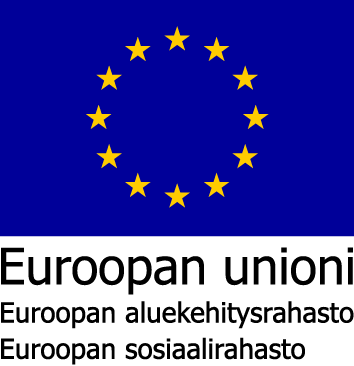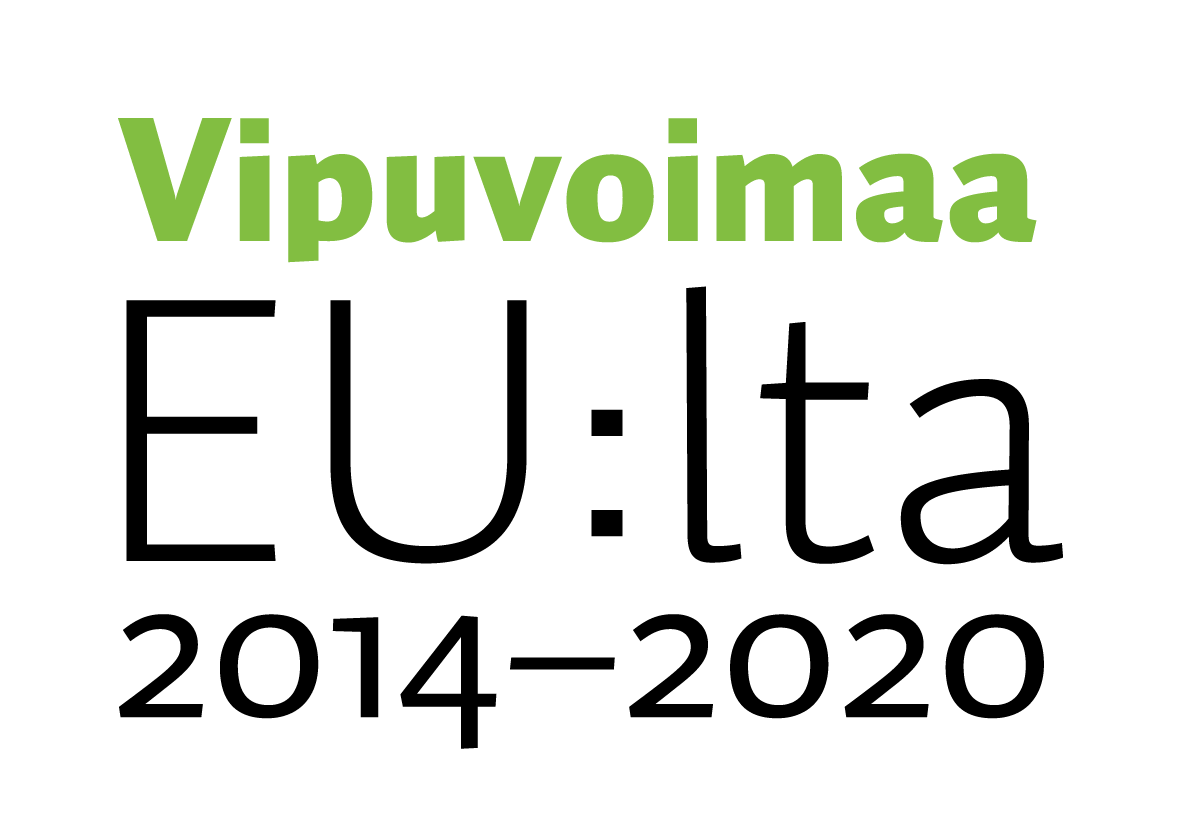

 |
 |
Hankekoodi: A76997
Hankkeen nimi: Lapin alueen elintarviketeollisuuden sivuvirtojen hyödyntäminen funktionaalisten rehujen tuotannossa - FeedFUNK
Toimintalinja: 2. Uusimman tiedon ja osaamisen tuottaminen ja hyödyntäminen
Erityistavoite: 3.2. Uusiutuvan energian ja energiatehokkaiden ratkaisujen kehittäminen
Suunnitelman mukainen toteutusaika: Alkaa 1.4.2021 ja päättyy 30.6.2023
Toiminnan tila: Toiminta päättynyt
Vastuuviranomainen: Lapin liitto
Hakijan virallinen nimi: Lapin ammattikorkeakoulu Oy
Organisaatiotyyppi: Ammattikorkeakoulu
Y-tunnus: 2528792-5
Jakeluosoite: Jokiväylä 11C
Puhelinnumero: +358 20 798 6000
Postinumero: 96300
Postitoimipaikka: Rovaniemi
WWW-osoite: http://www.lapinamk.fi
Hankkeen yhteyshenkilön nimi: Haveri-Heikkilä Juho Taavi
Yhteyshenkilön asema hakijaorganisaatiossa: Projektisuunnittelija
Yhteyshenkilön sähköpostisoite: juho.haveriheikkila(at)lapinamk.fi
Yhteyshenkilön puhelinnumero: 044 4780289
Hakijoiden lukumäärä tai tuen siirto -menettely:
FeedFUNK -hankkeessa edistetään alueellisia kiertotalouden ratkaisuja. Hanke etsii ratkaisuja Lapin alueen elintarviketeollisuuden materiaali- ja resurssitehokkuuden kasvattamiseen, ympäristövaikutusten vähentämiseen, hiilijalanjäljen pienentämiseen sekä uusien innovaatioiden jalkauttamiseen uusien biotuotteiden ja tuotantotapojen muodossa. Lapin maakunta on asettanut tavoitteeksensa kehittää Lappilaista kiertotaloutta usealla eri sektorilla kaivannaisteollisuudesta koulutusmoduuleihin. Tämän tavoitteen myötä Lapin alueelle toivotaan muodostuvan uusiin kiertotalouden innovaatioihin perustuvaa liiketoimintaa. Elintarviketeollisuuden sivuvirrat ja niiden hyödyntäminen uusiin tuoteinnovaatioihin ovat monesti jääneet taka-alalle, vaikka niiden potentiaali lopputuotteiden korkean arvonlisän myötä ovat huomattavat aluetalouteen.
Tunnistettuja sovelluskohteita materiaalitehokkuuden lisäämiseksi elintarviketeollisuudessa ovat erilaiset rehusovellukset. Hankkeessa tehdään selvitys Lapin alueella muodostuvista elintarvike- ja rehulaatuisista sivuvirroista, toteutetaan näihin sivuvirtoihin perustuvia rehutuotepilotteja, joiden toimivuutta ja vaikutuksia hyvinvointiin testataan tuotantoeläimillä tehtävin ruokintakokein.
Tämän hankkeen ylemmän tason tavoitteena ovat uusien innovaatioiden jalkauttaminen alueelliseen kiertotalouteen uusien rehutuotteiden ja tuotantotapojen muodossa, jotka: 1. tukevat elintarviketeollisuuden kannattavuutta materiaalitehokkuutta lisäämällä uusien rehuratkaisujen muodossa, 2. vähentävät alueen elintarviketeollisuuden ympäristövaikutuksia ja pienentävät hiilijalanjälkeä, 3. tukevat alueen kehittymistä kiertotalouden tutkimuksen-, osaamisen- sekä innovaatiokeskittymänä.
Hankkeessa vahvistetaan jo aiemmin tehtyä kehitystyötä kotimaisten funktionaalisten rehuinnovaatioiden osalta ja vahvistetaan Lapin alueen kierto- ja biotalouden tutkimuksen-, osaamisen- sekä innovaatiokeskittymää jonka keskiössä on Lapin ammattikorkeakoulu ja alueella toimivat tutkimuslaitokset.
Hankkeen tuloksina syntyy uusia kiertotalouden ratkaisuihin perustuvia tuotekonsepteja ja tuotantoprosesseja, jotka ovat suoraan sisällytettävissä alueella toimivien yritysten tuotantoon.
Hankkeen tulokset mahdollistavat kiertotalouteen pohjautuvan elinkeinotoiminnan ja liikevaihdon kasvun alueella. Tämän odotetaan pitkällä aikavälillä tuovan alueelle investointeja. Hankkeen tuloksena myös Lapin ammattikorkeakoulun ja alueellisten tutkimus- ja kehittämislaitosten muodostama innovaatio- ja osaamiskeskittymiä vahvistuu lisäten alueen houkuttelevuutta sekä opiskelijoiden, osaajien ja yritysten silmissä.
Hankkeen pitkän aikavälin tavoitteena on käynnistää arvoketju jossa arvonlisän saajia ketjun portaiden vaiheissa ovat 1. Sivuvirtoja tuottavat elintarvikeyritykset 2. sivuvirtoja hyödyntävät funktionaalisia rehuja tuottavat yritykset 3. Porontaloutta ja eläintentuotantoa harjoittavat henkilöt ja yritykset.
Hankkeen avulla saavutettavissa olevia hyötyjä panimo- ja rehuteollisuudelle, eläintentuotannolle sekä porotaloutta harjoittavien liiketoiminnalle voidaan arvioida seuraavasti: Hanke on tyypiltään kehittämisorientoitunut, käänteentekevää muutosta tavoitteleva kehittämishanke, jonka toteuttamisella on useita hyötyjä. Hankkeen tuottamia suoria hyötyjä hankkeen kohderyhmille ovat:
• Uusia panimoteollisuuden sivuvirtoihin pohjautuvia biomassoja joilla hyvä saatavuus jatkojalostukseen
• Uusia resurssi- ja kustannustehokkaita tuotantomenetelmiä
• Panimoalan ympäristövaikutusten (mm. vesistökuormitus ja hiilijalanjälki) pieneneminen.
• Uusia tuotekonsepteja eläintenruokintaan, joilla mahdollinen funktionaalinen vaikutus
• Eläintentuotannon alhaisempi ympäristökuormitus (antibioottijäämät)
Hankkeen tuloksista ja toiminnasta suoraan hyötyvät seuraavat toimijat arvoketjun erivaiheissa:
• Panimoalan yritykset: Laitosten tuottamat sivuvirrat suuntautuvat jatkojalostuskäyttöön minkä vuoksi laitoksille ei muodostu niistä jätemaksuja ja kuluja vaan uusi tulonlähde.
• Jatkojalostusta tekevät yritykset: Uusia innovatiivisia rehu- tai elintarvikekonsepteja joita voi kaupata sekä kotimaan että vientimarkkinoilla.
• Eläintentuotanto ja porotalous: Uusia funktionaalisia valkuais-ainerikkaita rehuja. Tuotteiden vaikutuksesta mahdollisesti korkeampi infektiovaste ja nopeampi elopainon karttuminen.
• Lihatuotteita jalostavat yritykset: Ympäristövastuullisempi eläintentuotanto vähentyneen sairastavuuden ja antibioottien käytön vähentymisen myötä.
• Oppilaitokset: Hankkeen tuloksia hyödynnetään Lapin ammattikorkeakoulun agrologi opintojen opetusmateriaaleissa ja teemme yhteistyötä opiskelijoiden kanssa esim. opinnäytetöiden toimeksiantajana. Hanke julkaisee hankkeen aikana opetusmateriaalia oppilaitoksen käyttöön. Tarkoituksena edistää agrologi koulutuksen kiertotalousosaamista ja vahvistaa osaamisalan keihäänkärkeä ruokaturvaa. Ruokaturva on määritelty agrologikoulutuksen keihäänkärjeksi vuonna 2020.
Hankkeen tuloksista ja toiminnasta välillisesti hyötyvät seuraavat kohderyhmät:
• Kuluttajat: Tuotteita joissa ei antibioottijäämiä
• Yhteiskunta: Uusien yritysten syntyminen, joilla kasvaville vientimarkkinoille sopivia tuotteita. EU:n tavoitetason lähentyminen antibioottien käytön vähentymisen myötä.
• Alueelliset innovaatio- ja osaamiskeskittymät: Vahvistaa elintarvikealan ja porotalouden kasvua alueella antaen resursseja jatkokehittää ja viedä uusia innovaatioita käytäntöön ja näin toimia vahavana suunnannäyttäjänä uusille innovaatioille ja kehitykselle valtakunnallisesti sekä globaalisti. Tämä osaltaan lisää innovaatio- ja osaamiskeskittymien houkuttelevuutta sekä uusille osaajille että yrityksille.
Myönnetty EU- ja valtion rahoitus: 393 322
Toteutunut EU- ja valtion rahoitus: 382 486
Suunniteltu julkinen rahoitus yhteensä: 491 655
Toteutunut julkinen rahoitus yhteensä: 478 110
Maakunnat: Lappi
Seutukunnat: Rovaniemen, Kemi-Tornion, Pohjois-Lapin
Kunnat: Rovaniemi, Inari, Tornio, Utsjoki, Kemi
Jakeluosoite:
Postinumero:
Postitoimipaikka:
Suunniteltu: 0, joihin työllistyvät naiset 0
Toteutunut seurantatietojen mukaan: 0.00, joihin työllistyvät naiset 0.00
Suunniteltu: 0, joista naisten perustamia 0
Toteutunut seurantatietojen mukaan: 0.00, joista naisten perustamia 0.00
| Välitön | Välillinen | |
| Ekologinen kestävyys | ||
| Luonnonvarojen käytön kestävyys | 9 | 9 |
| Hanke tuottaa tuotantomenetelmän joka hyödyntää uusiutuvia raaka-aineita | ||
| Ilmastonmuutoksen aiheuttamien riskien vähentäminen | 9 | 9 |
| Hankkeen tulokset vähentävät merkittävästi panimoalan hiilijalan jälkeä lisäämällä sen tuottamien sivuvirtojen jatkokäyttöä | ||
| Kasvillisuus, eliöt ja luonnon monimuotoisuus | 8 | 8 |
| ei vaikutuksia | ||
| Pinta- ja pohjavedet, maaperä sekä ilma (ja kasvihuonekaasujen väheneminen) | 9 | 9 |
| Hanke tuottaa menetelmän joka vähentää merkittävästi elintarvike/panimoalan vesistö, ilma- ja maaperävaikutuksia | ||
| Natura 2000 -ohjelman kohteet | 0 | 0 |
| Hankkeen toiminta ei ulotu NATURA -kohteille | ||
| Taloudellinen kestävyys | ||
| Materiaalit ja jätteet | 5 | 5 |
| Hankkeen tulokset vähentävät merkittävästi panimoalan tuottamien jätteiden määrää sille hankkeen tavoitteena on löytää sen tuottamille sivuvirroille jatkokäyttöä | ||
| Uusiutuvien energialähteiden käyttö | 0 | 0 |
| Ei vaikutusta | ||
| Paikallisen elinkeinorakenteen kestävä kehittäminen | 8 | 7 |
| Hankkeen merkittävimmät taloudelliset vaikutukset kohdistuvat alueellisten tuotantolaitosten resurssitehokkuuden kasvattamiseen ja tuotannon lisäämiseen paikallisesti sivuvirroista | ||
| Aineettomien tuotteiden ja palvelujen kehittäminen | 0 | 0 |
| ei vaikutusta | ||
| Liikkuminen ja logistiikka | 0 | 0 |
| ei vaikutusta | ||
| Sosiaalinen ja kulttuurinen kestävyys sekä yhdenvertaisuus | ||
| Hyvinvoinnin edistäminen | 4 | 4 |
| Hankkeen tuottamilla tuotteilla mahdollisia terveysvaikutuksia. | ||
| Tasa-arvon edistäminen | 0 | 0 |
| Hanke edistää elinkeinojen kilpailukykyä sukupuoleen katsomatta | ||
| Yhteiskunnallinen ja kulttuurinen yhdenvertaisuus | 0 | 0 |
| ei vaikutusta | ||
| Kulttuuriympäristö | 0 | 0 |
| ei vaikutusta | ||
| Ympäristöosaaminen | 8 | 8 |
| Hanke kasvattaa kestävien ja resurssitehokkaiden menetelmien käyttöönottoa, joilla on positiivisiä ympäristövaikutuksia. Näin hanke edistää ympäristöosaamisen tason kasvua | ||
Hankkeen toteutus:
FeedFUNK – HANKE oli kaksi vuotinen porojen funktionaalisiin rehuihin liittyvä hanke, jossa testattiin sienirihmastoja sisältävien rehujen vaikutusta porojen terveyteen sekä sivuvirtojen hyödyntämistä rehujen osana. Hanke oli kaksivuotinen, jonka aikana toteutettiin kahdet maittavuuskokeet alkutalvesta 2021 sekä keväällä 2022 sekä yhdet 4 kk kestävät ruokintakokeet poroille Kaamasen koeporotarhassa Kutuharjulla. Kesällä 2022 tehtiin myös ruokintakokeet Broilereille Jokioisilla Luken tutkimusalueella.
Hankkeessa tehtiin myös haastatteluja Lapin alueen elintarvikeyrityksille, jossa selvitettiin vuotuinen sivuvirtojen määrä, jota voitaisiinko niitä hyödyntää porojen rehuissa. Haastatteluja toteutettiin myös poroisännille sekä porotilamatkailu yrityksille, joiden tarkoituksena oli selvittää, kuinka uudenlaiset funktionaaliset rehut otetaan vastaan sekä millaisia toivomuksia heillä olisi uudenlaisille rehuille sekä mitä haasteita he olivat kokeneet nykyisten väkirehujen kanssa. Hankkeen aikana kehitettiin maittavuuskokeisiin erilaisia rehutuotekonsepteja erilaisista sivuvirroista ja sienirihmastoista. Sienirihmastojen tutkiminen ja kasvatus tehtiin maittavuus- ja ruokintakokeisiin Joensuun Luonnonvarakeskuksen laboratoriossa. Maittavuuskokeisiin väkirehut tehtiin Lapin ammattikorkeakoulun biolaboratoriossa ja testattiin rehujen rakennetta, pelletöitymistä sekä kovuutta erilaisilla resepteillä. Testasimme myös sivuvirtana käytetyn mäskin kuivauksen energiankulutusta sekä kuinka energian kulutusta voitaisiin vähentää erilaisilla mekaanisilla toimenpiteillä ennen kuivausta. Ruokintakokeisiin rehujen teko kilpailutettiin eri rehuteollisuuden yritysten kesken. Neljä kuukautta kestävien ruokintakokeiden rehumäärä oli niin suuri, että niiden valmistaminen olisi ollut mahdotonta pienillä koe-erälaitteilla. Ruokintakokeiden rehut valmistettiin Lantmännen Agro Oy:ssä niin, että väkirehuun lisättiin 7,3 % sienirihmastoa sekä väkirehua. Kontrolliryhmän rehu oli vain kaupallista väkirehua. Sivuvirtojen lisääminen ruokintakokeiden rehuun olisi voinut vääristää koetuloksia, joten koeryhmille lisättiin sienirihmastoa väkirehun lisäksi.
Ruokintakokeet aloitettiin joulukuussa 2022 ja ne päättyivät maaliskuussa 2023. Ruokintakokeissa oli 76 vaadinta sekä 26 vasaa. Vaatimet ja vasat jaettiin tasaisesti 4 ryhmään niin, että vaatimia oli jokaisessa ryhmässä saman verran ja vasojen sukupuolet oli jaettu tasan ryhmien kesken. Kolmen ryhmän poroille syötettiin eri sienen sienirihmastoa sisältävää rehua sekä neljäs ryhmä oli kontrolliryhmä, joka sai tavallista väkirehua. Ruokintakokeiden alussa ja lopussa otettiin vaatimilta paino ja kuntoisuus sekä veri- ja ulostenäytteet. Puolivälissä koetta tehtiin myös välipunnitus, jossa tarkastettiin jokaisen koeporon paino sekä kuntoisuusluokka. Jos koeporon paino tai kuntoisuusluokka oli laskenut liian alhaiseksi, otettiin poro pois kokeesta kuntoutumaan. Koeryhmissä Hierarkia vaikutti alemmalla tasolla olevien vaatimien ja vasojen rehun saantiin, joten osa poroista jouduttiin poistamaan terveys syistä kokeesta. Ruokintakokeiden loputtua jokaisesta ryhmästä teurastettiin kaksi vasaa (yhteensä 8) joiden koko ruho tutkittiin läpikotaisin sekä erityisesti pötsien sisältä ja kunto tutkittiin mahdollisten mikrobiologisten vaikutusten tunnistamiseksi.
Tulokset: Hankkeen aikana saatiin monia tuloksia. Hankkeessa kehitetyt erilaiset rehukonseptit, jotka sisälsivät sivuvirtoja ja sienirihmasto maistuivat poroille. Enemmän porojen ruokintaan vaikuttaa niille tarjottavan rehun homogeenisyys eli jos pelletin koko oli erilainen mitä ne olivat tottuneet syömään, vaikutti se aluksi niiden syönti intoon. Myös pellettien tekeminen erilaisista sivuvirroista kuten mäskistä onnistuu hyvin.
Hierarkiaa tutkittiin ruokintakokeiden alussa noin kuukauden ajan. Hierarkian tarkkailu oli hyvä asia koska huomasimme, että se vaikuttaa paljon porojen ruokintaan. Tulosten analysointi on vielä kesken mutta pötsinäytteiden tuloksista selvisi, että sienirehut vaikuttavat porojen pötseihin positiivisesti ehkäisemällä haitallisten bakteerien kasvua. Hankkeen aikana saadut tulokset ovat kuitenkin alustavia. Tarkempaan ja luotettavampaan tutkimustulokseen vaaditaan lisätutkimusta ja suurempaa otantaa pötsinäytteiden osalta.